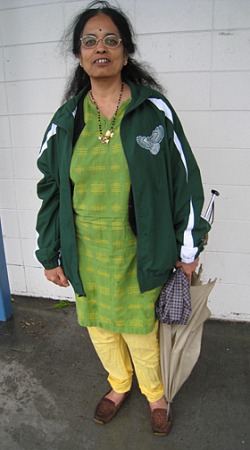Below are my first pictures documenting the garments of residents of Santa Clara County and the beginning of my journey in this project. This mom at my son's school was gracious to let me photograph her. She explained to me that she was from Southern India. I enjoy the mix of Western and traditional clothing she was wearing. She and a Sikh mother explained to me that if I want to see fancier Indian clothing I should visit one of the many temples around. The Sikh mom also offered to let me photograph her clothing at her house. I will take her up on it!
I do want to get images of people about their everyday lives wearing their cultural clothing so I will be taking a camera with me everywhere.
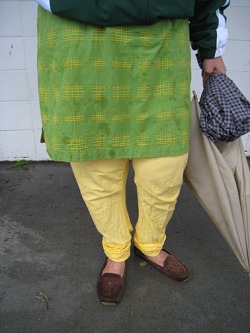
Detail of clothing
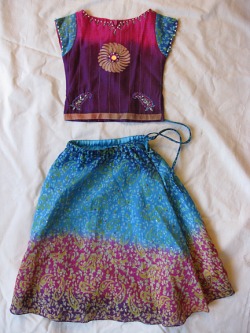
hand-me-down outfit!
Recently a friend gave me a bag of hand-me-down clothing for my daughter. Buried among the standard Gymboree and Old Navy garments was this beautiful top and skirt from India. When they return to India to visit family, my friend receives so many gifts of clothing for her daughter that the child barely has time to were them before she outgrows them.
I cannot wait for warm weather so that my daughter can wear this.
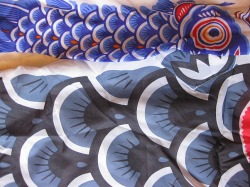
Here are images of fabric Japanese Boy's Day carp. These belong to my son. In Japanese agricultural settlements in California and Hawaii these sock kites were a familiar sight in early February. They would hang from long bamboo poles in celebration of the sons in a family. In Japanese culture carp represent strength and tenacity. I enjoy the bold abstracted scale patterns on these and chose to post a close up detail image as I think this pattern might be one to revisit later in the design stage of a digital textiles.
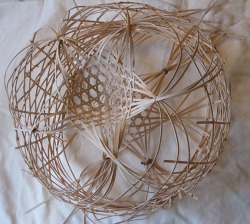
The very first berry basket making company in Santa Clara was owned and operated by the family of Kamejiro Shimizu. The company was called Wayne Basket Company. This is interesting to note as Chinese and Japanese were banned from the canning industry due to the anti Asian social and political climate. Canning companies often advertised that all fruit was packed by only white men and women. The hostility stretched from the late 1800's to WII when Santa Clara Japanese Americans were removed to Tanforan and then to internment camps. The City of Sunnyvale voted to urge Congress to permanently exclude Japanese from California in 1944. This was rescinded in 2001.
This woven experiment of mine reflects on traditional Japanese weaving techniques. It blends the forms of hats and containers. I used a rice bowl as the shaping form of the tightly woven areas.
In one of my digital textiles I hope to reinterpret basket weaving patterns in Japanese textiles to reflect upon and honor this first berry basket company of Santa Clara and the legacy of Kamijiro Shimizu.
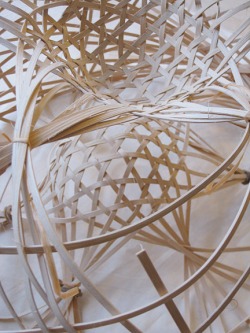
Detail of weaving experiment

